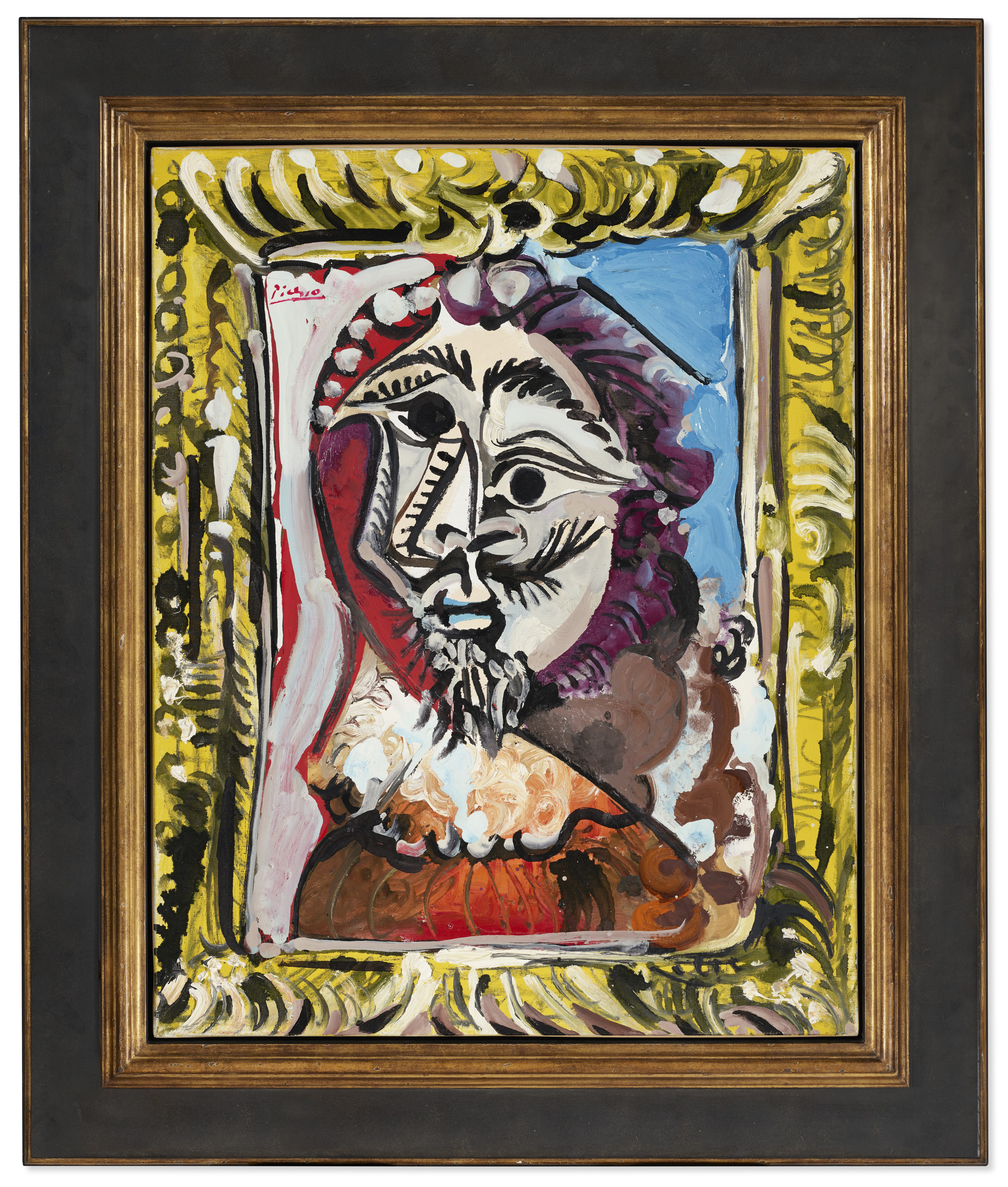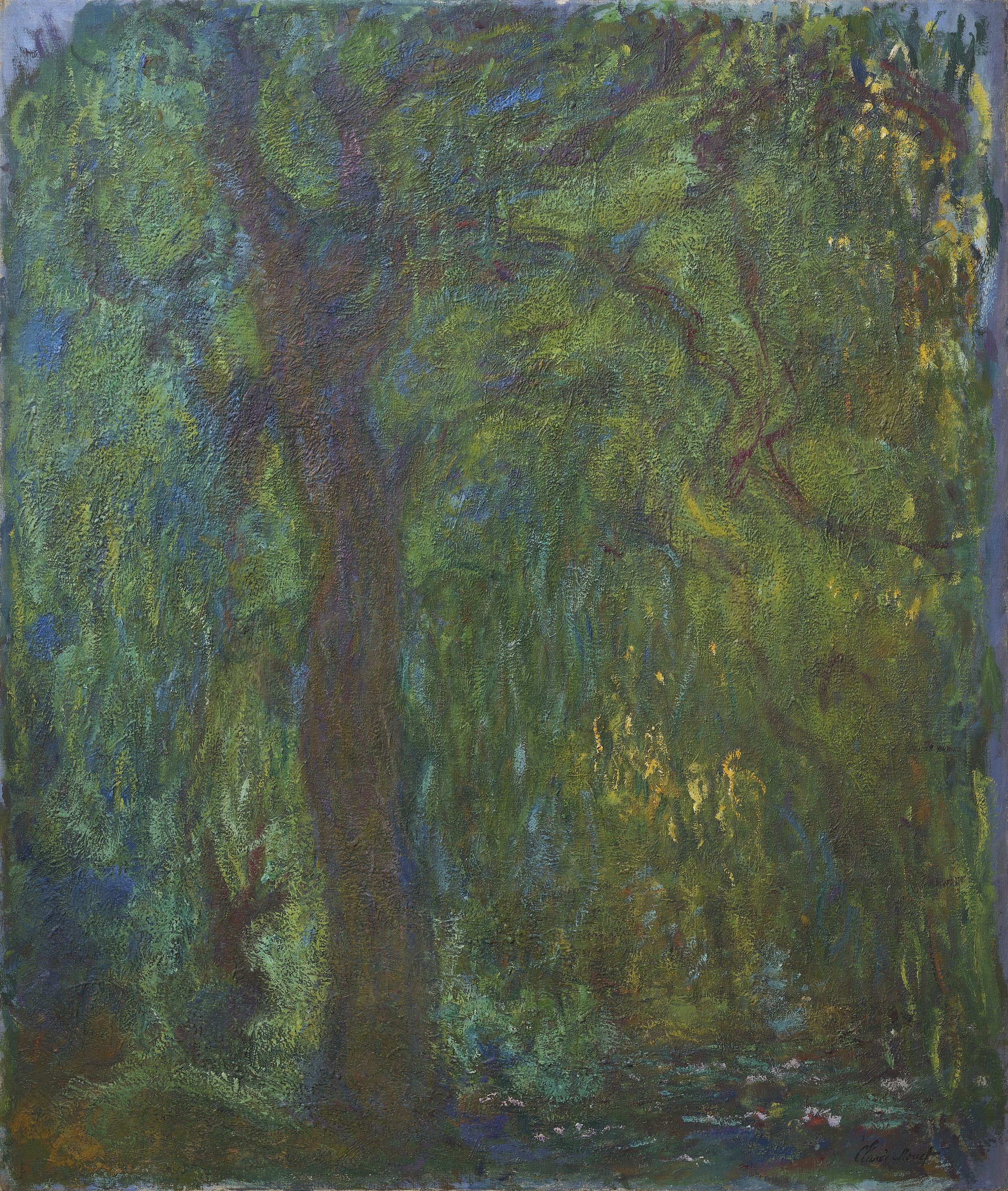Pablo Picasso (1881-1973)
Buste d’homme dans un cadre
signed ‘Picasso’ (upper left); dated ‘29.3.69’ (on the reverse)
oil on canvas
92 x 73 cm. (36 ¼ x 28 ¾ in.)
Painted in Mougins on 29 March 1969
Estimate on Request
Christie’s is pleased has announced Pablo Picasso’s Buste d’homme dans un cadre from the Estate of Sir Sean Connery, as a leading highlight of the 20th and 21st Century Art Evening Sale to take place on 26 May at the Hong Kong Convention and Exhibition Centre (estimate on request; in the region of HK$150 million/ US$19 million). Offered fresh to the market and extraordinary among Picasso’s late works for its orderly composition, graceful, decisive lines, and intensity of expression, this seminal canvas is one of the finest and most striking of the artist’s paintings from the last decade of his life.
Buste d’homme dans un cadre is an epic representation of Picasso’s iconic musketeer motif: the pan-European, 17th Century swashbuckling archetype of masculinity, deriving its inspiration from celebrated golden age master painters such as Rembrandt and Velázquez, and literary giants Shakespeare and Dumas. In this painting, the sitter bears the gaze of Picasso’s own intense black eyes, sporting a goatee worthy of the Cardinal Richelieu, a literary nemesis in Dumas’ famed novel The Three Musketeers which Picasso re-read in 1966, sparking his inspiration for the series. In Picasso’s version of Cardinal Richelieu in the present work, the subject displays an affable flair, through an intensely colourful palette depicting his distinctive hair and facial features; the strong gaze and wide collar of his costume recall the directness and intensity of Rembrandt’s self-portraits.
In this work, the style of paint application is indebted much more to Vincent van Gogh: dense swirling strokes of paint emanate throughout, curling within his ruff, around his head and even up over the top of the painted frame—whereupon Picasso modernises the clever trompe l’oeil compositional device—referencing the ornate gilt of Baroque ornamentation in a playful bright yellow, energetically articulated with rapid, gestural strokes and scrawls of black, white, and sable, reminiscent of Van Gogh’s unruly sunflowers and strong winds on wheat field
Stephane Connery, son of Sir Sean Connery, remarked, “Sean had an extraordinary sense of aesthetics, composition and movement honed by his career in a visual medium as well as his long marriage to Micheline, a fine and internationally exhibited painter. Further, he truly enjoyed visiting museums which sharpened his discerning eye. Our last visits included the Philadelphia Museum of Art, The Barnes Collection, and the National Gallery of Art in Washington D.C., shortly before he decided to purchase "Buste d'homme dans un cadre". He loved and owned numerous works by Picasso, and upon seeing "Buste d'homme dans un cadre" he was captivated by its expressive power and freedom. It seems fitting that this work would be sold in Asia as Sean had a tremendous affinity for Asia and its culture.
Before Sean passed away in 2020, he allocated a sizable portion of his estate to be used for philanthropic purposes. We — his family — are now working to create a fund that will offer support to organisations that reflect Sean’s interests and passions, and serve to keep his legacy of integrity, opportunity and effectiveness alive. These efforts will be focused in Scotland, where Sean was born, and the Bahamas, where he lived for over 30 years and adored like his homeland.”
26 May | Hong Kong Convention and Exhibition Centre
Claude Monet (1840-1926)
Saule pleureur
oil on canvas
51 3/8 x 43 3/8 in. (130.5 x 110.2 cm.)
Painted in 1918 – 1919
Estimate: HK$95,000,000 – 135,000,000/ US$12,200,000 – 18,000,000
Hong Kong – Christie’s is delighted to announce the Asian auction debut of Saule pleureur, a masterpiece by Claude Monet, at Christie’s 20th and 21st Century Art Evening Sale, to be held on 26 May at the Hong Kong Convention and Exhibition Centre.
Monet reacted to the onset of unrest in Europe in 1914 with an outpouring of creativity, culminating in a period now known as the great final flowering of his career. During this period, the artist embarked on a series of ten paintings depicting a majestic weeping willow lining the artist’s famous lily pond in Giverny, which itself was the subject of the famed and monumental Grandes décorations, later donated to the nation of France to celebrate victory in the First World War. The Weeping Willow series has been described as some of Monet’s most direct and poignant works of the time, and it had been Monet’s intention that one from this great series would too join the gift to the nation. Saule pleureur remains arguably one of the best works in the series, and is one of only five from the series in private ownership.
Exceptional for its all-consuming emotive intensity, the painting is executed with forceful brushstrokes in pulsating hues. Its hero is the giant willow tree, soaring upwards to the entire height of the enormous canvas, its tumbling foliage falling like a shimmering cascade of water from above. The regal strength and quiet dignity of the tree trunk is balanced in contrast with the tranquility and ethereality of the lily pond in the lower right corner, infused with the suppressed but pulsating energy in the air and glimmering light through the falling leaves from the great boughs of the tree. In sum, Saule pleureur is a dramatically beautiful work of genius, as well as a record of an important chapter in history. Even more poignantly, this is Monet’s manifestation of his faith in the redeeming power of resilience, hope, and optimism.

